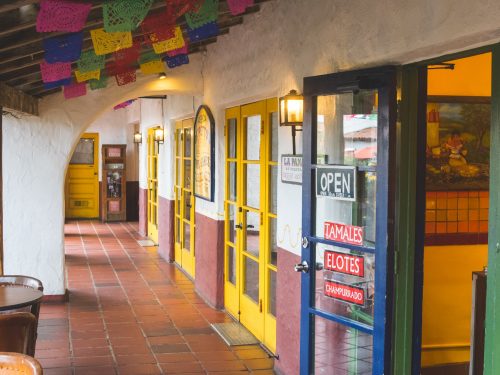 Everything You Need To Know About San Diego’s Old Town
Everything You Need To Know About San Diego’s Old Town
At first glance San Diego’s Old Town appears to be a collection of rustic shops and festive restaurants, the perfect place to spend…
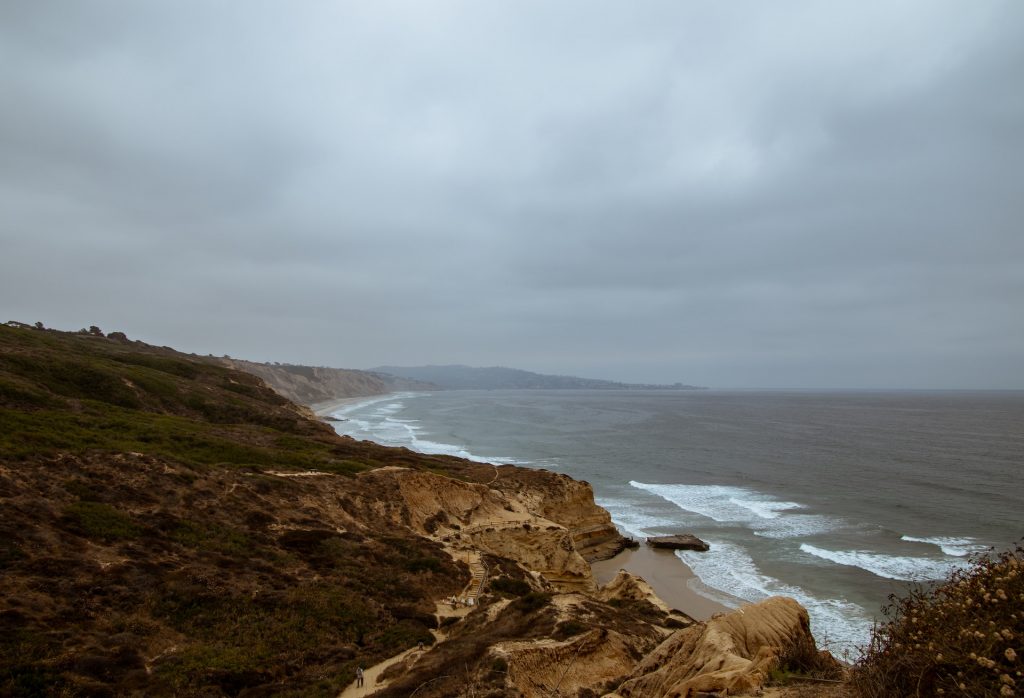
Torrey Pines State Natural Reserve is nestled along the Pacific Ocean and home to pristine trails and a living ecological landscape. Just 20 miles north of downtown San Diego, the scenic park sits on La Jolla’s rocky shores.
Crashing waves, foamy white caps, cliffside views, an endless expanse of pure ocean magic – it’s one of my favorite views in all of San Diego. South, north, or west, Torrey Pines State Natural Reserve captures your vision and captivates the soul. Whether hiking steep hills, traversing windy trails, climbing rocks, skipping stones, or dipping your toes in the Pacific, time spent in this natural habitat is never wasted.
San Diego’s cliffs are home to one of southern California’s coastal wonders. Set on 1,500 acres, the reserve explodes with life. Home to heaps of birds, bugs, critters of all kinds, the famous Torrey Pine trees, a protective habitat for conservation, and an endless expansive vista of blue water, this San Diego bucket list spot is a must do for your next trip. Popular with travelers and beloved by locals, Torrey Pines State Natural Reserve is a welcoming spot to get your nature fix.
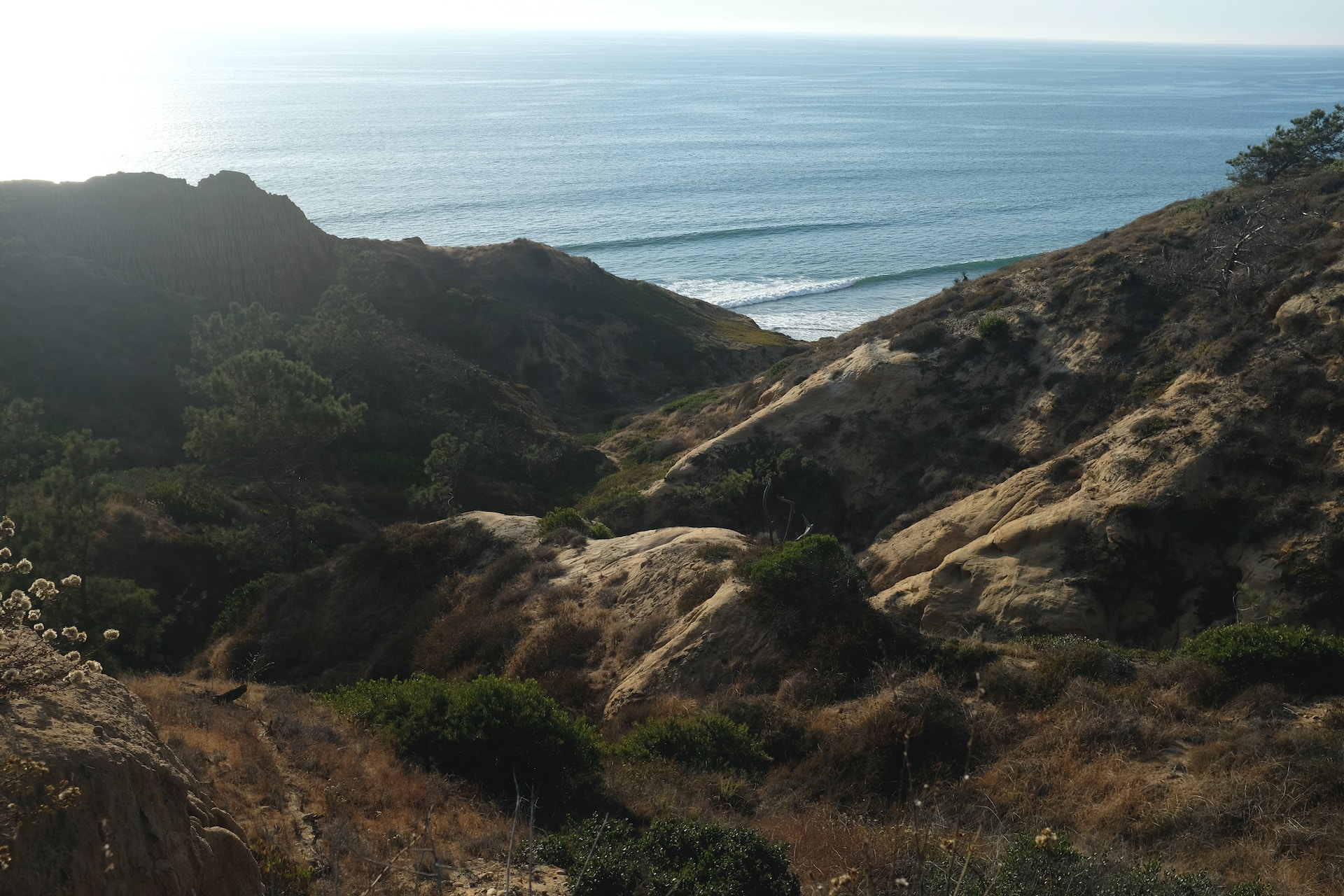
Torrey Pines’ history can be traced back to the early Kumeyaay people. Then came the Spanish explorers, which led to the first historical account of the naming of this majestic tree — the Torrey pine — by Dr. Charles Christopher Parry in 1850. The trees, named for Dr. Parry’s mentor, Dr. John Torrey, have not only stood the test of time, but the area became an official state park in 1959, got the name it’s known by today in 2007, and has continued to welcome millions of visitors year after year.
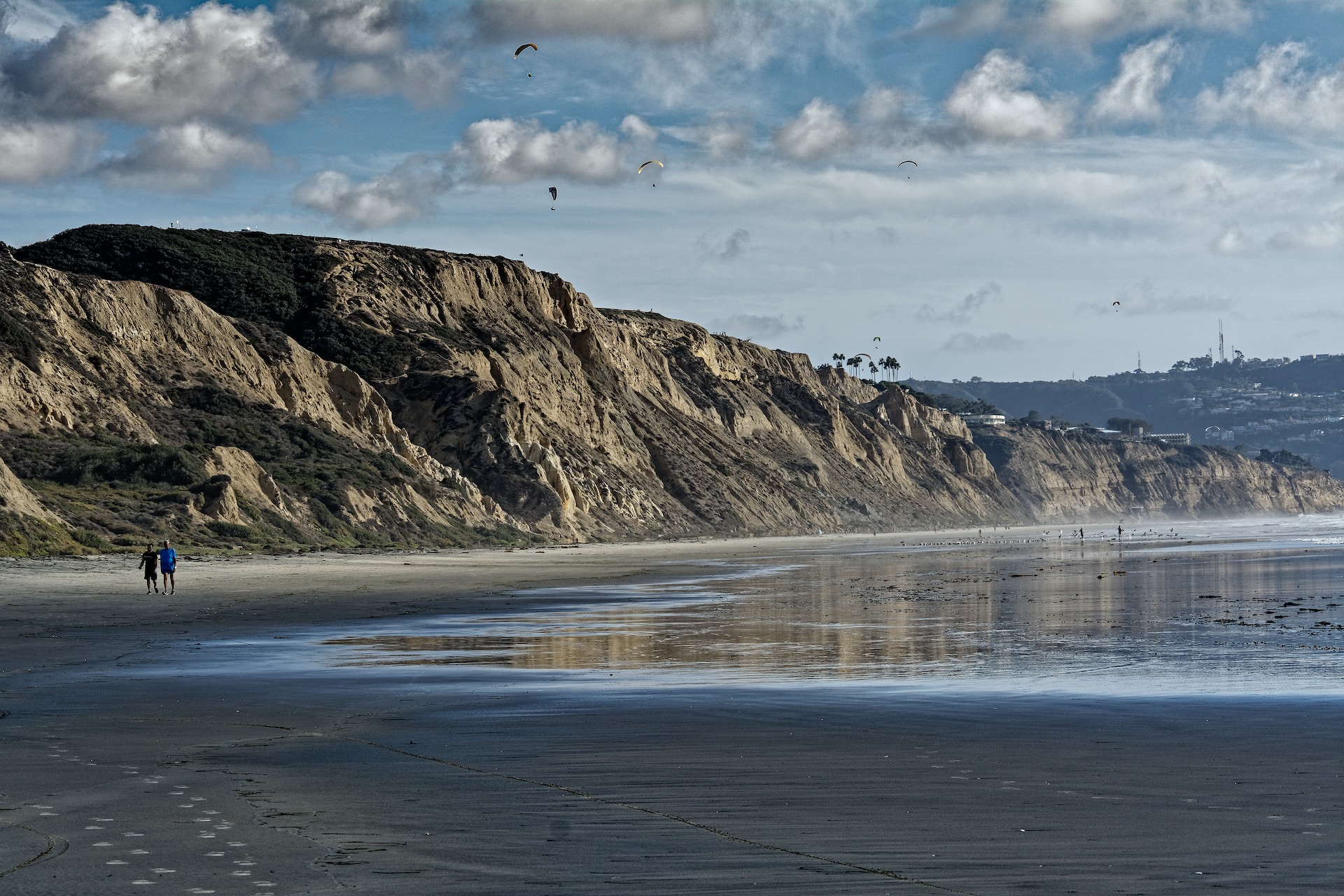
Nature lovers visiting San Diego need to put Torrey Pines on their must-see list. This reserve is one of the many picturesque spots helping people connect to all things nature. Whether you’re snapping pics for your Insta, gaping at the high-flying gliders, hiking the paths, or relaxing by the ocean, outdoor beauty is everywhere.
Besides just enjoying the scenery, some of the top things to do at Torrey Pines include hiking the trails, exploring the local ecosystem, and splashing in those epic waves.
Financed by one of San Diego’s matriarchs, Ellen Browning Scripps, Torrey Pines Lodge grew into the grounds of the reserve in 1923. Incorporating modern methods alongside Kumeyaay architectural strategy, the lodge vision arose from the style of desert-based Hopi Indian homes.
Today, this building is home to the Visitor Center and base for the Ranger Station. It houses a tiny museum gift shop, and water fountains, and bathrooms are in the nearby parking lot by the trailheads across the way.
Open daily from 9 a.m. to 5 p.m., the Visitor Center is a good place to stop to pick up a few souvenirs and ask questions about the reserve.
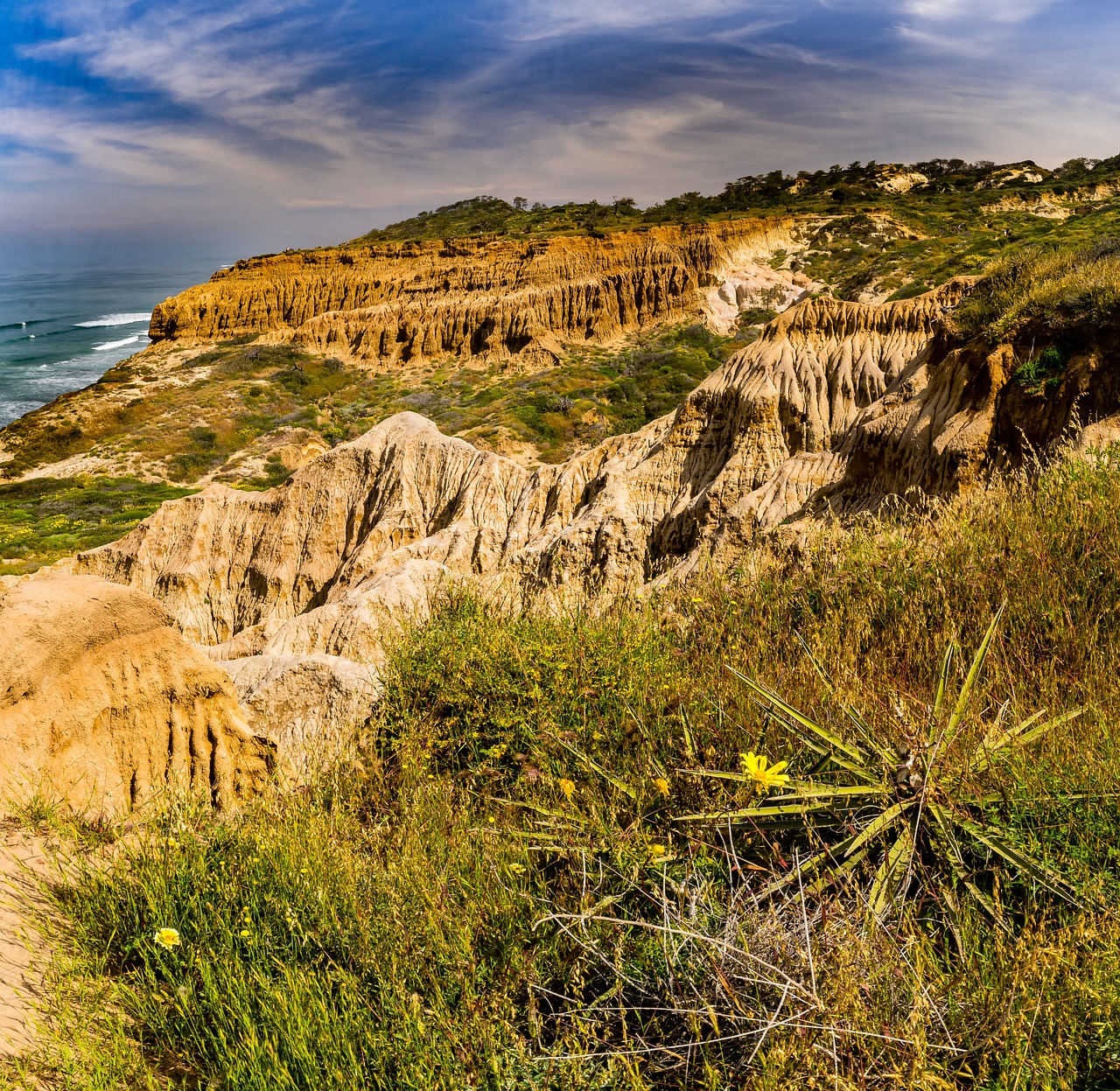
If you do only one trail at Torrey Pines, make it the Beach Trail. This is my favorite for many reasons. The sandy path winds through the trees and various rock formations, always drawing your eyes towards the water. At low tide, if you choose, you can even test your stair-stepping skills all the way down to the beach and discover the joys of skipping rocks and digging in tide pools.
The reserve has many more trails of varying length and difficulty. Along with the beach trail, here are some others you shouldn’t miss.
For more details on each of the trails, check out the map and brochure on the reserve’s website.
But Torrey Pines State Natural Reserve offers far more than the trails on the map. Hikers will find other cliffside paths to explore and photographers will enjoy capturing the scenery of the region. And budding botanists and entomologists will find an immersive habitat to explore. It’s a natural reserve for all ages and interests.
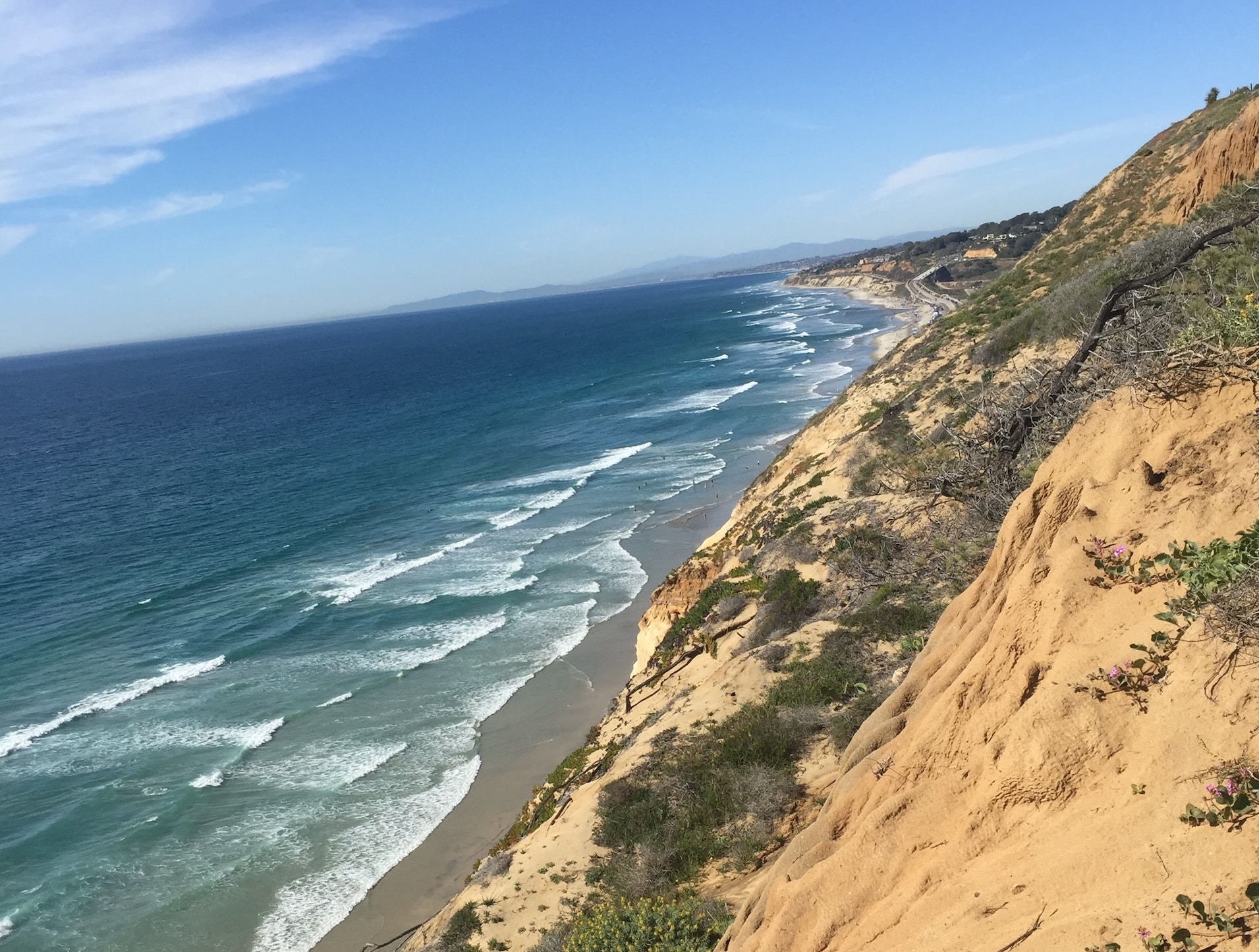
As one of only 16 natural reserves throughout the entire state park system, Torrey Pines is dedicated to protecting both plants and wildlife, and you’ll find tons of educational programs, most free (although schools and large groups need reservations and there may be a fee). Programs are offered through the Torrey Pines Docent Society.
There are a whole host of tours and naturalist talks, free mindfulness walks early Sunday mornings, and free public guided hikes at 10 a.m. Friday through Sunday and holidays that are often limited to small group size. Guides are always available to answer any question that comes to mind.
Torrey Pines State Natural Reserve is open to the public from 7:15 a.m. to sunset.
All visitors to Torrey Pines need a car permit in order to park in any of the designated lots. Passes can be purchased online or at the entrance kiosk.
Local tip: If you’re up for a hike up a giant hill and a potential long wait, give the free spots along the ocean a go. Keep in mind the area is very crowded on weekends and holidays.
Reminders for visitors:
And, while San Diego is incredibly dog-friendly, visitors aren’t allowed to bring pets with them to the reserve, so leave Fido at home.
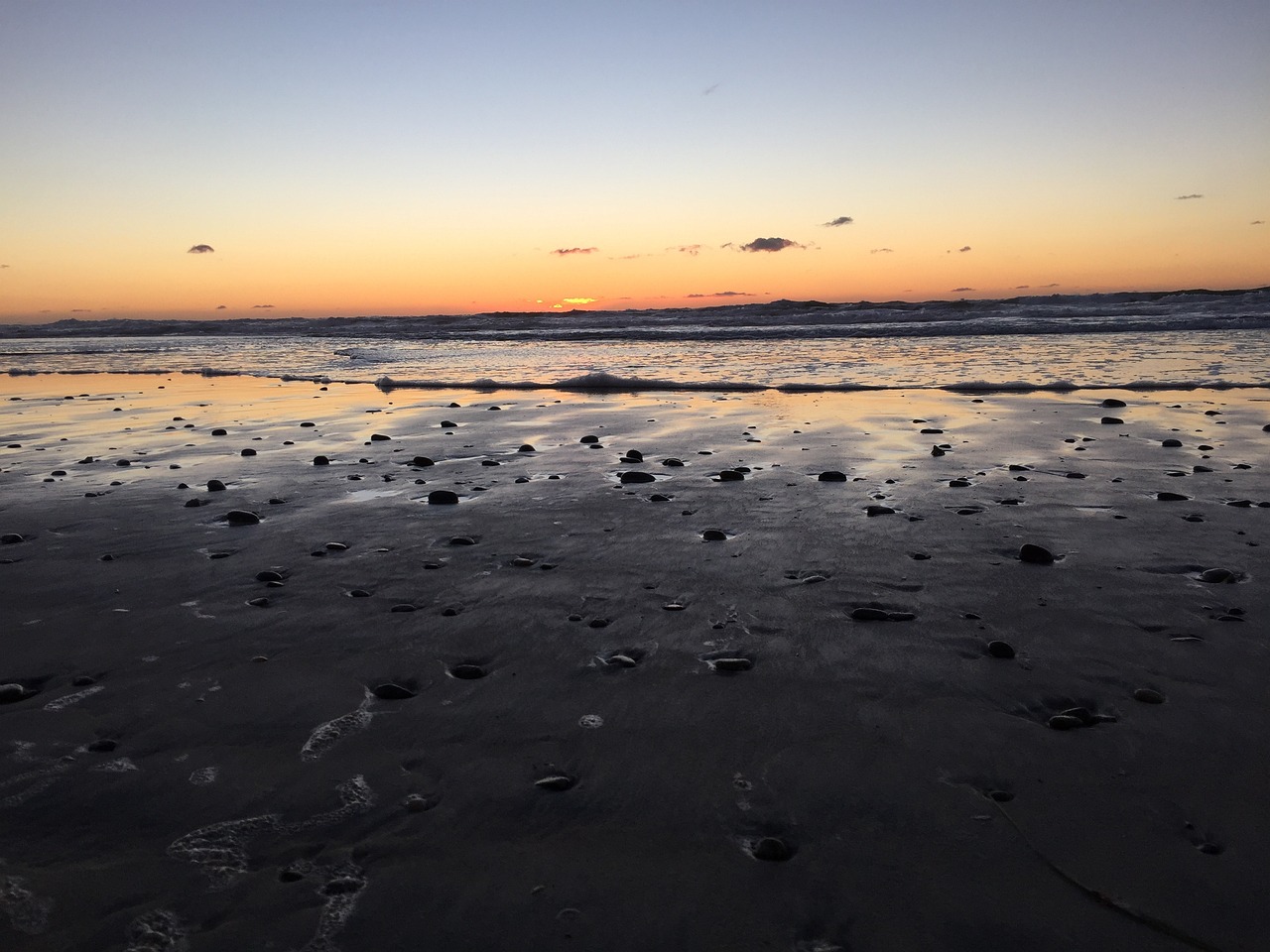
The best way to get to the reserve is by car. Here’s the address:
12600 North Torrey Pines Road
San Diego CA 92037
You can also plug these GPS coordinates into Google Maps, and it will take you right there: 32.92183, -117.2497.
Open and welcoming to all, the reserve has accessible access at the visitor center as well as a handful of accessible trails. These include:
While someone might need a bit of extra help on steep slopes and a few entryways, the visitor center is accessible. They also have accessible restrooms in the West Parking Lot, and two ADA parking spaces in the East Parking Lot near the lodge.
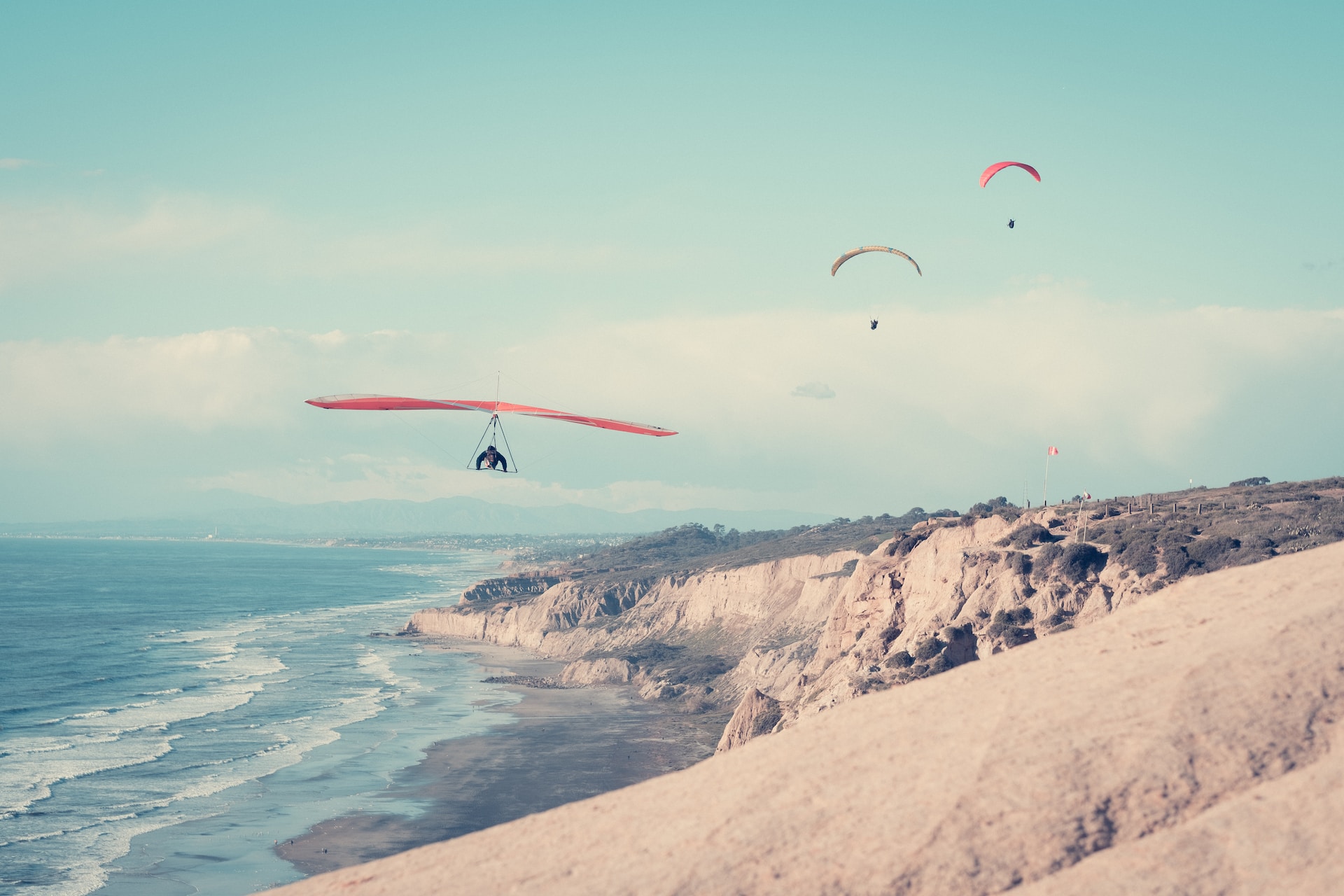
Along the Pacific, next to a world renowned golf course and a launching gliderport, San Diego’s acclaimed Torrey Pines State Natural Reserve is a gem for nature lovers. On your next visit to San Diego, be sure to add a visit to Torrey Pines to your must-see list.
Pack your sunscreen, wear your sturdiest shoes, bring a full water bottle, and an extra layer for the often windy hillside, and join the millions who have found the magic in these trails.
Looking for another show-stopping spot? You can’t miss the most famous park right in the center of the city of San Diego. Check out our guide on everything you need to know before visiting Balboa Park.
 Everything You Need To Know About San Diego’s Old Town
Everything You Need To Know About San Diego’s Old Town
At first glance San Diego’s Old Town appears to be a collection of rustic shops and festive restaurants, the perfect place to spend…
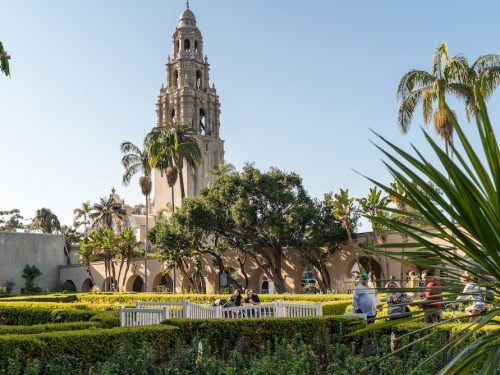 All You Need To Know Before Visiting Balboa Park
All You Need To Know Before Visiting Balboa Park
To say that Balboa Park is one of San Diego’s top attractions is to put it too simply. Within the park’s 1,200 acres,…
 Everything To Know About Visiting the Gaslamp Quarter
Everything To Know About Visiting the Gaslamp Quarter
The Gaslamp Quarter, sometimes called the Gaslamp District, is a must for first timers in San Diego. Not only does it have a…